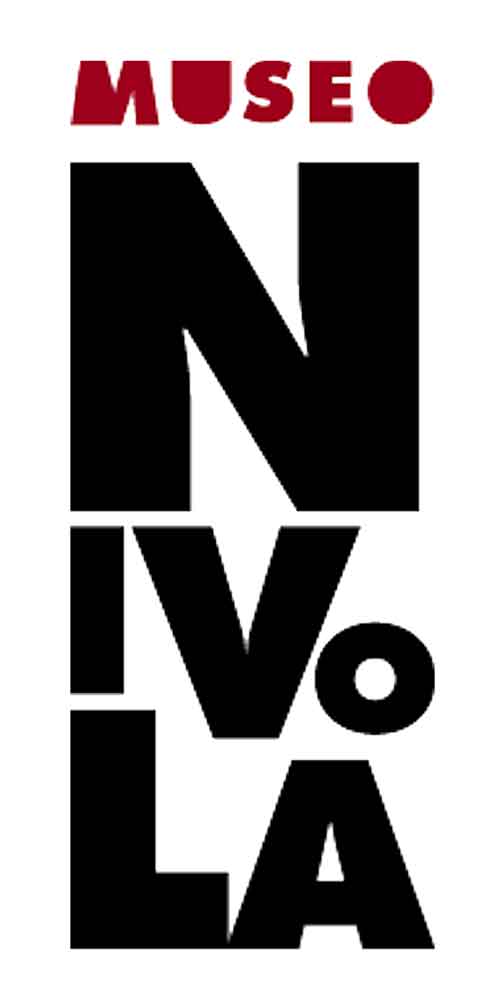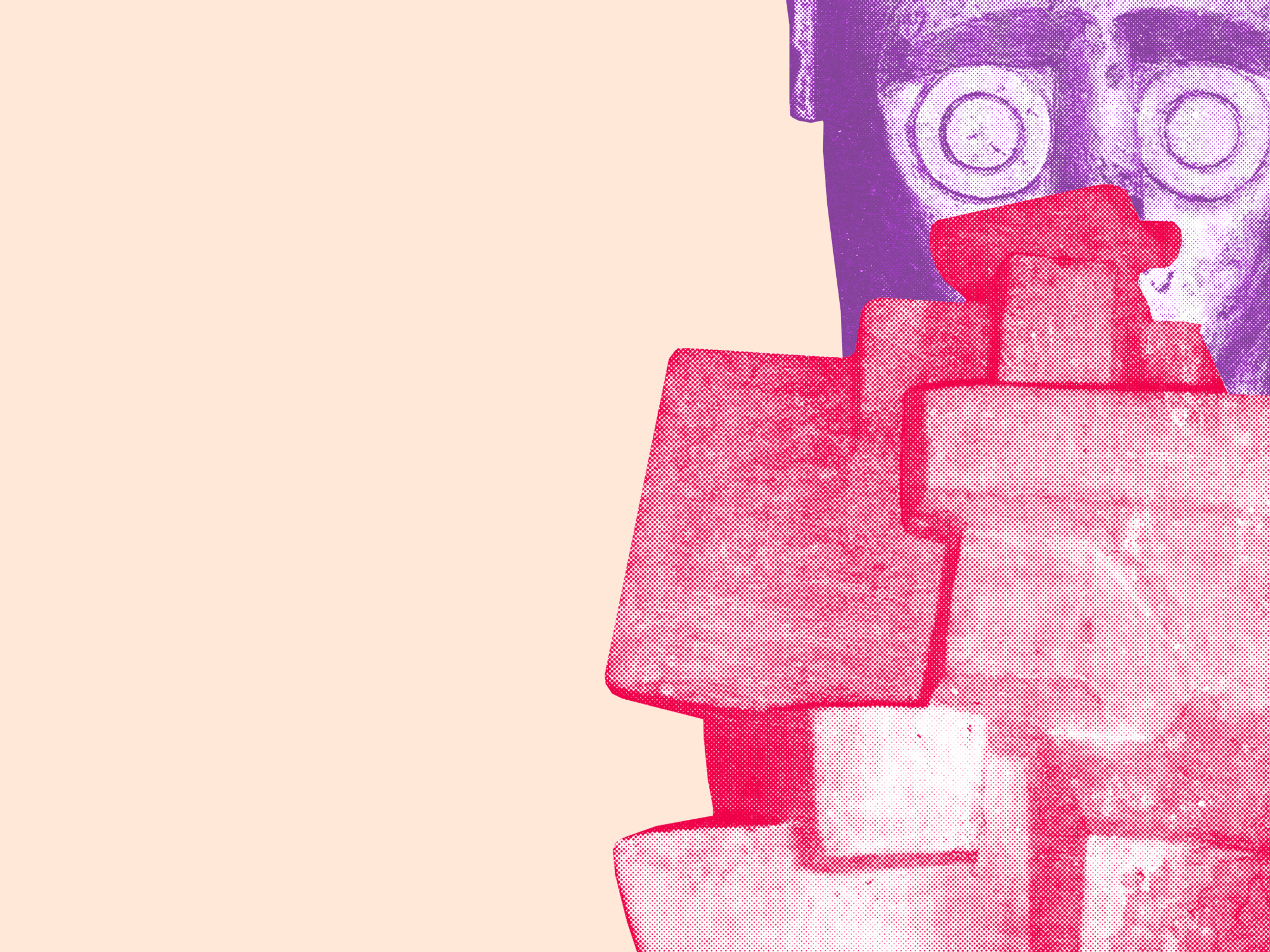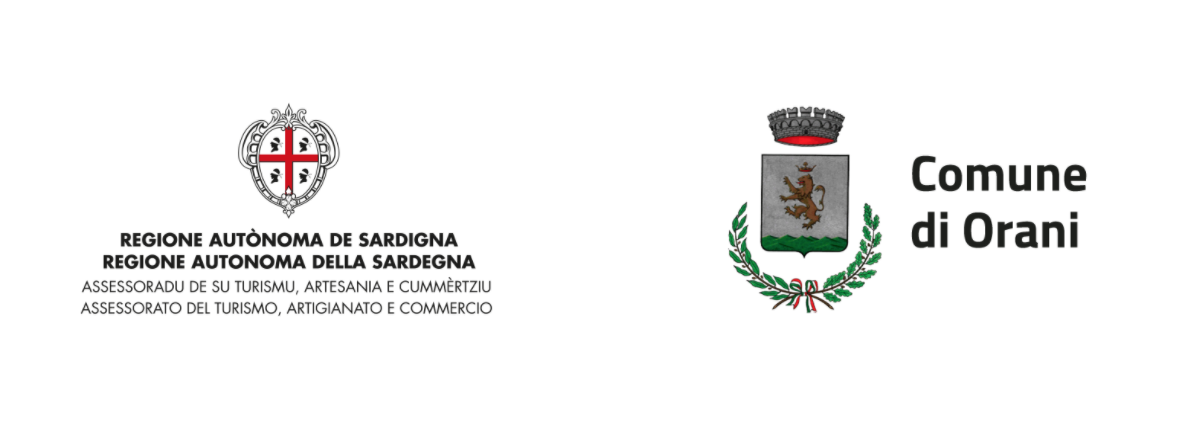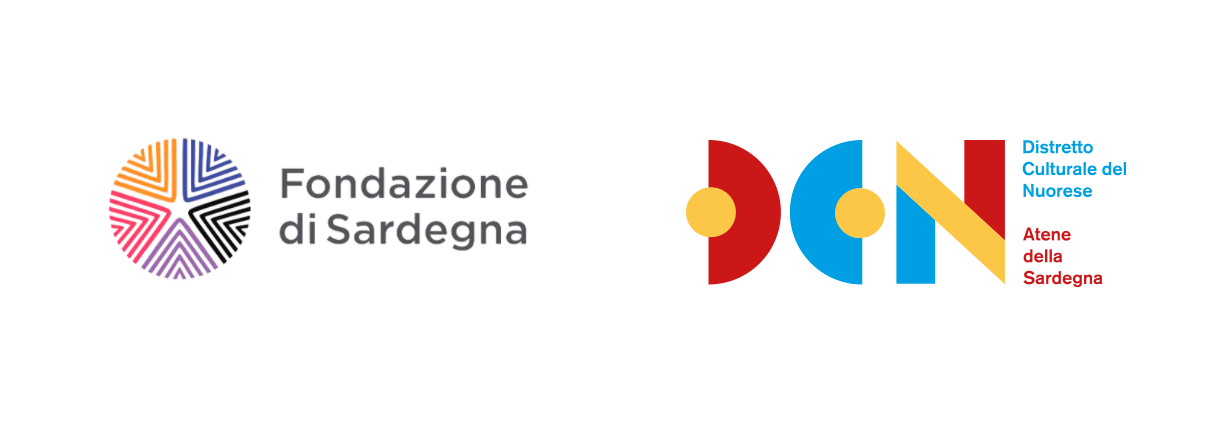ON THE SHOULDERS OF GIANTS.
The Modern Prehistory of Costantino Nivola
curated by Giuliana Altea, Antonella Camarda, Luca Cheri, Anna Depalmas, Carl Stein
Museo Civico Giovanni Marongiu – Sala Polifunzionale, Cabras
Museo Nivola, Orani
November 30, 2024 – April 22, 2025
The Mont’e Prama Foundation and the Nivola Foundation are excited to announce the first exhibition dedicated to exploring the connection between Costantino Nivola’s art and the Prehistory of Sardinia. This engaging exhibition showcases a comparison between masterpieces of Neolithic and Nuragic sculpture and architecture, alongside significant works by Nivola. For the first time, it reconstructs the relationship between Nivola and Prehistory, presenting the artist’s sculptures alongside the sources that inspired him, made possible through a series of important loans from both public and private collections, Italian and international.
Anthony Muroni, president of the Mont’e Prama Foundation, states: “This project opens a new path for what concerns the relationships of collaboration and synergy between museum institutions, putting history and the contemporary into dialogue, favouring an integrated reading that is fresh, plural and evocative. We have included this program among the fundamental ones for the current three-year period, willingly dedicating the entire on-site exhibition’s efforts to this collaboration so intense and full of meaning which, by placing Cabras and Orani in close connection during the period in which both exhibitions will remain open, ideally connects all of Sardinia and its visitors.”
“The relationship between Prehistory and contemporary art is one of the key themes of twentieth-century culture – says Giuliana Altea, president of the Nivola Foundation -, and Nivola’s work is an important testimony to this, never studied in this aspect until now. The exhibition On the Shoulders of Giants, born from the collaboration between Fondazione Mont’e Prama and Fondazione Nivola, confirms how the synergy between institutions active in different cultural fields can bring results of great importance.”
The title of the exhibition alludes, in addition to the monumental statues found in Mont’e Prama, to the medieval aphorism according to which we are, compared to the ancients, like dwarves on the shoulders of giants: we can see further than them, but only because we can rise thanks to their greatness. And the sculpture by Costantino Nivola (Orani 1911 – Long Island 1988) has been inspired from the beginning by the anonymous masters of Sardinian prehistory.
Trained as a graphic designer and installation designer in Monza and Milan, Nivola – an anti-fascist exile in the United States since 1939 – began to make sculptures in 1950. In an international cultural climate that, after the destruction of the war, looked to Prehistory as a source of a possible renewal of civilisation, Nivola rediscovered Sardinia and its extraordinary archaeological heritage, placing it as the basis of his art. After the Second World War, in the wake of the opening to the public of the Lascaux caves in France (1948), the call of the distant past attracted artists from all over the world. In the aftermath of a terrifying conflict, with the devastation of entire regions, the launching of two atomic bombs and the looming threat of nuclear disaster, the end of human civilisation seemed a not-so-remote possibility. It brought to mind the moment of man’s appearance on earth.
Thus, with its mysteries, prehistory became a mirror of modern man’s anguish but evoked a positive idea of spirituality and community bonds in contrast with modern materialism, individualism, and dehumanised science. For Nivola, who felt a deep connection with the “primordial” dimension of Sardinia, it was, above all, this positive interpretation of Prehistory that prevailed.
Nivola returned to Sardinia for the first time in 1947. Once again in New York, in contact with Jackson Pollock and the artists of the New York School, at that time equally fascinated by totemism and the origins of humanity, and following the crucial meeting with Le Corbusier, the artist discovered sculpture. In 1950, his first sandcasts were born (plaster or cement sculptures made with sand moulds), which blend elements of Surrealism (Nivola looks to artists such as Ernst and Giacometti) with elements of Sardinian folklore, but above all with the memory of female figurines from the Neolithic era such as the so-called Venus of Senorbì and the Mother Goddess of Porto Ferro.
After 1952, following another six-month stay on the island as a correspondent for the American magazine Fortune, his interest in prehistory peaked. Struck by the Nuragic civilisation, he travelled the length and breadth of the island, taking hundreds of photos, visiting the excavations of the Nuraghe of Barumini, and coming into contact with its discoverer, the archaeologist Giovanni Lilliu.
From this moment on, Nivola will feel like the spiritual heir of the ancient lineage of nuraghi builders and bronze sculptors, delivering to the press and critics an image of himself strongly linked to the reference to Sardinia’s ancestral past. In 1953, his great relief for the Olivetti Showroom in New York transformed the luxurious store on Fifth Avenue into a sort of cave populated by mythical figures no less mysterious than those of Lascaux, full of specific references to the pre-Nuragic and Nuragic civilisations of Sardinia. In the following years and until the end of his life, Prehistory would have remained a constant reference and a perennial stimulus for his research, from the references to Nuragic architecture present in his monumental projects through the development of an original fresco graffito technique up to the solemn and evocative Mothers created starting from the Seventies.
The exhibition
The exhibition, set up simultaneously in two locations, the Museo Nivola (Orani) and the Museo Civico G. Marongiu (Cabras), compares Nivola’s works with the testimonies of Sardinian prehistory that influenced him, presented through original finds, photographs, and multimedia installations curated by the Visual Computing Group of CRS4.
Born from the scientific collaboration between the art historians Giuliana Altea and Antonella Camarda, the prehistoric archaeologists Luca Cheri and Anna Depalmas, and Carl Stein, architect and former collaborator of Nivola, the exhibition presents a unique opportunity to explore the link between Nivola and Sardinia, thanks also to a group of key works by the artist from private American and Italian collections.
“The path – explains Giuliana Altea – follows the development of Prehistory in Sardinia, from the appearance of Humans to the apogee of the Nuragic Civilization. Every moment of the island’s remote past is accompanied by fundamental works by Costantino Nivola, in an ideal dialogue that surprises with the punctuality of the references and fascinates with the beauty of the works on display.”
From the first section, in which Nivola tells his myth of origin through a series of works – including a newly discovered bronze triptych from the 1960s – that refer to Gea and Uranus, the original divine couple, we move on to the age of the first graffiti, which we can still admire today in the domus de janas. “These graffiti,” says Antonella Camarda, “are a constant source of inspiration for Nivola: not only does the artist disseminate his sculptures with engraved motifs reminiscent of petroglyphs, but, from the mid-1950s, graffiti on fresh plaster became one of his favourite techniques for large public decorations, such as the church of Sa Itria in Orani or the playground of the Wise Towers in Manhattan (1964).”
The comparison between some ceramics from the 5th-4th millennium B.C. and the plates that Nivola created with the ceramist Luigi Nioi in 1980 show the continuing fascination for these early signs.
“In Sardinia – continues Anna Depalmas – the presence of menhirs – large ogival monoliths from the pre-Nuragic era to which the exhibition’s second section is dedicated – is ubiquitous. These enigmatic artefacts must have deeply affected Nivola, who cites them in the first sandcasts of the 1950s, and even more directly in the project for Piazza Satta in Nuoro, from 1967.”
At the heart of the exhibition at the Nivola Museum is the Great Mother, the protagonist of the Eneolithic statuary and a central theme in Nivola’s imagination. From the Totems of the 1950s to the Mothers of his late maturity, the artist’s female figures retain the ambivalent charm of their prehistoric ancestors.
The exhibition continues with the parallel, never proposed before, between the sacred wells, Nuragic monuments linked to the cult of water, and the art of Nivola, which takes up some of their structural and detailed elements. “The theme of water,” says Carl Stein, “has always been dear to Nivola: fountains play an important role in the decoration of the Morse and Stiles colleges at Yale University, designed by Eero Saarinen (1960-1962, one of his most ambitious projects), and in that of the Wise Towers in New York (1964). Nivola loved to contrast the abundance and waste of water in the United States with the scarcity of water in Sardinia, which made it precious and fueled the desire for it.”
The section dedicated to the Builder, an almost mythical figure with whom Nivola identified, both as the son of a bricklayer and as the heir of the distant creators of the nuraghi, closes the exhibition at the Nivola Museum and opens that of the Giovanni Marongiu Museum in Cabras. “Nivola,” says Luca Cheri, “sees the very essence of art in the idea of construction. Based on his fascination with Nuragic walls, the Building Blocks series was born in the early 1950s. Numerous sculptures and monuments conceived as spaces to be inhabited also refer to the Nuragic wall, a constant sign of the coexistence, in Nivola – of the memory of Nuragic architecture and the modernist need for an art for the community.”
At the Cabras Museum, which houses the Giants of Mont’e Prama, the exhibition compares the Nuragic sculptures in stone and bronze to those of Nivola. The Nuragic bronzes, whose slender and dry structure would seem to distance them from the solid and compact forms of most of Nivola’s sculptures, actually constitute a recurring model for male figures, with almost literal references – as in the terracottas of the 1970s – or more indirect but still profound.
For Nivola, shepherds, warriors and prehistoric artisans are mythical figures from the time of the Nuraghi who continue to wander the earth, giving energy and inspiration to the artist.
The Mont’e Prama Foundation
The Mont’e Prama Foundation was established in July 2021 by the Ministry of Culture, the Autonomous Region of Sardinia, and the Municipality of Cabras. Its primary responsibilities include managing and developing the Civic Museum and the resources of the Sinis Natural Archaeological Park. The foundation collaborates with the Ministry’s regional offices on protection, research, and conservation efforts. Additionally, it promotes and supports dialogue with various institutions in Sardinian culture to foster cultural, social, and economic growth in Sinis and throughout Sardinia.
It manages the Civic Museum of Cabras, where it recently inaugurated a new exhibition on the Giants of Mont’e Prama, the archaeological areas of Tharros and Mont’e Prama, the hypogeum and the church of San Salvatore, the Spanish tower and the church of San Giovanni di Sinis.
In 2023, it organised the temporary display of one of the Giants of Mont’e Prama at the Metropolitan Museum of Arts in New York. In 2024, the same statue was transferred to the National Archaeological Museum of Madrid, where it will remain on view until January 12, 2025.
The Nivola Foundation
The Costantino Nivola Foundation is a non-profit cultural institution dedicated to promoting Costantino Nivola’s artistic and human legacy, supporting contemporary art in all its forms, and contributing to Sardinia’s cultural and social development.
It manages the Nivola Museum, a complex of pavilions immersed in the greenery of an urban park. It owns the most important European collection of works by Costantino Nivola (Orani, 1911—East Hampton, 1988), a graphic designer, art director, and sculptor active in the integration of visual arts and architecture and a crucial figure in the context of cultural exchanges between Italy and the United States in the twentieth century.
The Nivola Foundation organises exhibitions dedicated to contemporary art, with a particular focus on design, sculpture, the relationship between the arts and the relationship between humans and the environment.
It also carries out a program of public events, educational activities and research, acting as a cultural force oriented towards innovation and social promotion in the centre of the Mediterranean.
_______
On the Shoulders of Giants.
The Modern Prehistory of Costantino Nivola
Institutional partners
Ministry of Culture, Autonomous Region of Sardinia, Fondazione di Sardegna, Municipality of Cabras, Municipality of Orani, Regional Directorate of Museums of Sardinia, National Archaeological Museum “Giovanni Antonio Sanna” of Sassari, National Archaeological Museum “Giorgio Asproni” of Nuoro, National Archaeological Museum of Cagliari, Menhir Museum of Laconi, CRS4, Soprintendenza Archeologia, belle arti e paesaggio per la Città metropolitana di Cagliari e le province di Oristano e sud Sardegna, Soprintendenza Archeologia Belle Arti e Paesaggio per le province di Sassari e Nuoro
Assistant curators
Antonio Cattari
Luca Poddighe
Exhibition design
Alessandro Floris
Exhibition mounting
Artigianato e Design by Pietro Fois
Graphic Design
Heart Studio
Multimedia Design
Visual and Data-intensive Computing – CRS4
Prints
Biography of Fabio Milia
Shipping
Apice
Tiemme Srl
Insurance
Reale Mutua
Catalogue
Allemandi
Thanks to
—————————————————————————————————–
Information
Mont’e Prama Foundation – Marongiu Civic Museum, Cabras
Via Tharros s.n.c.
09072 Cabras (Or)
0783/290636 | fondazione@monteprama.it – https://www.monteprama.it
Nivola Foundation – Nivola Museum, Orani
Via Gonare 2
08026 Orani (Nu)
+ 39 0784 730063 | info@museonivola.it – https://museonivola.it
Press Office
Sara Zolla | +39 346 8457982 | press@sarazolla.com




